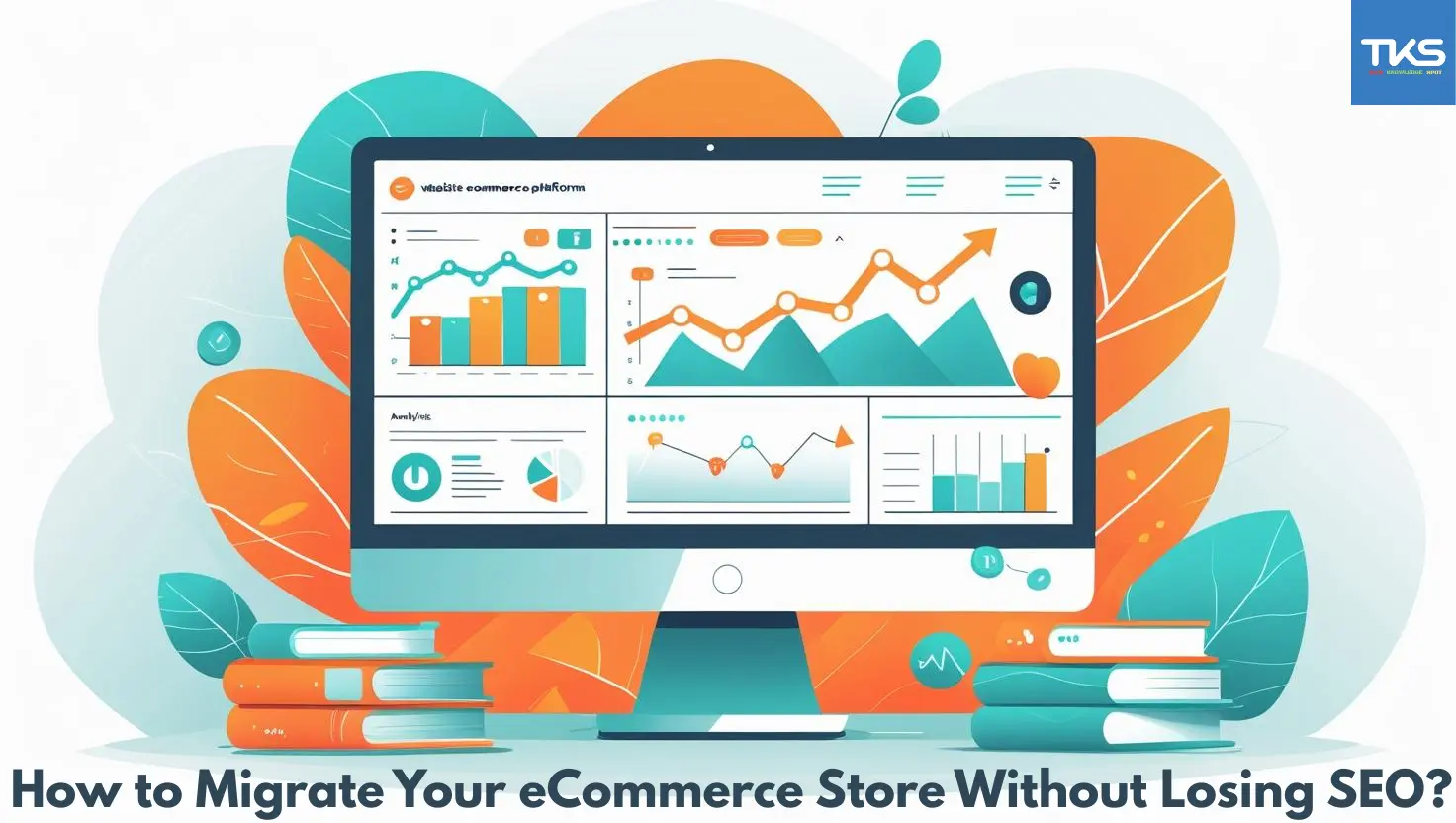Thinking about Migrate your e-commerce Store to a new platform? Whether you’re scaling up, seeking better features, or simply ready for a change, a platform migration is a big step — and one that comes with serious SEO risks if not handled carefully. Amid all the technical and design considerations, one critical factor must stay front and center: your search engine rankings.
So, you’re considering migrating your e-commerce site to a new platform. Your current setup no longer meets your growing needs, or you’re seeking features your existing platform can’t deliver. Whatever the reason, there’s one critical asset you cannot afford to compromise in your search engine rankings during the transition. SEO isn’t a one-time task, but it’s an ongoing task and it requires continuous efforts. It’s how your customers discover your store, develop trust, and make purchases. A poorly executed migration can undo years of SEO work in just days.
Migrating your eCommerce store doesn’t have to mean losing all the SEO progress you’ve worked hard for. With the right strategy, you can move smoothly while improving your search performance. In this guide, we’ll walk you through how to do it the right way—thoughtfully, efficiently, and with no unexpected headaches.
Why Is Protecting SEO During Migration Critical?
Let’s be honest—what’s the point of a beautifully created new store if no one can find it? So do your potential buyers when your eCommerce store drops off the search radar. And that can lead to a severe drop in sales. Organic search is one of the most powerful and cost-effective ways to bring someone to your eCommerce store.
It’s not just traffic—it’s traffic that converts. Protecting your SEO results during migration isn’t just a technical step; it’s a business-critical move that helps you stay visible, competitive, and profitable.
eCommerce store migrations can be tricky, especially if search engine optimization isn’t front and center. We’ve seen it happen repeatedly: important pages suddenly return 404 errors, redirects aren’t set up correctly, meta tags go missing, and internal links break. It’s easy to overlook these details during the excitement of launching something new, but those “small” mistakes send a message to search engines that your site isn’t as trustworthy or relevant as it used to be. And here’s the hard truth: once your rankings drop, it can take a long time—and a lot of effort—to recover. That’s why a well-planned migration isn’t just about preserving your current SEO; it’s about strengthening it.
Pre-Migration SEO Preparation
Audit Current SEO Performance
Before you touch anything, dig deep into what’s already working. Identify your best-performing pages, highest-converting keywords, and backlink-rich URLs. Google Search Console, Ahrefs, or SEMrush will provide a clear picture. This data will guide your decisions throughout the process.
Backup Website Structure and Data
It’s not just content but structure as well. Save a full crawl of your previous site: page URLs, metadata, internal links, and even image tags. Having a copy of what your site was beforehand gives you a template to rebuild it right.
Prioritise High-Value Pages and URLs
Some pages drive more traffic and conversions than others. Those need extra care. Whether it’s your homepage, key product categories, or evergreen blog content, make sure those URLs stay active — or that they redirect properly if the URL changes.
Benchmark Site Speed and Core Web Vitals
Page speed and user experience are key ranking factors. Before the migration, run a performance audit using Google PageSpeed Insights or Lighthouse. Note current load times, mobile usability scores, and Core Web Vitals. Aim to maintain or improve these scores on the new platform.
Review Existing Technical SEO Settings
Check your existing setup: canonical tags, no-index rules, structured data, hreflang tags (for multilingual sites), and XML sitemap configuration. Ensure these are documented and carried over to the new platform, as small technical missteps can lead to indexing issues.
Executing the Migration Carefully
Maintain URL Structure or Set Up 301 Redirects
You prefer to have the same URL structure, if possible. That keeps everything organized and prevents broken links. But if you must change URLs, however, utilize 301 redirects to point old pages to their new addresses. That tells search engines the change is permanent and preserves link equity.
Transfer Metadata, Headers, and Internal Links Properly
Don’t leave your SEO basics behind. Title tags, meta descriptions, H1 headings, image alt text — all these need to come along with your content. Internal linking is just as important. If your new pages do not link to each other similarly, you may ruin the way search engines crawl your site.
If all of this is a bit daunting, having a professional eCommerce migration agency on your side can be a huge help. They’ll handle the technicalities so you can do what you do best: grow your store, not attempt to fix SEO errors later.
Post-Migration SEO Actions
Run a Full SEO Audit
As soon as your new site is live, perform a full SEO audit. Use tools like Sitebulb or Screaming Frog to detect 404 errors, redirect chains, duplicate content, or missing tags. Fix issues promptly to minimize SEO disruption.
Resubmit the Updated Sitemap to Google Search Console
Google needs to know what’s happening. Submit your new sitemap in Search Console and request indexing of key pages. This speeds up re-crawling and enables Google to understand your site’s new structure earlier.
Monitor Keyword Rankings and Organic Traffic
Track your traffic and rankings during the next few weeks. There will be some fluctuation, but if numbers drop drastically and stay low, dig deeper. Watch crawl errors, lost backlinks, or missing redirects.
Final Words
Migrating your eCommerce store doesn’t have to result in lost SEO, as long as you prepare thoroughly and execute with precision. By auditing your current performance, protecting high-value pages, and ensuring technical continuity, you can migrate successfully while maintaining (and even improving) your rankings.
Not confident in doing it all yourself? Partnering with seasoned professionals ensures peace of mind — and could save you from costly mistakes and lost sales.
A well-planned migration isn’t just about changing platforms — it’s about setting your business up for the next phase of growth. Done right, your rankings will remain strong — or soar even higher.



